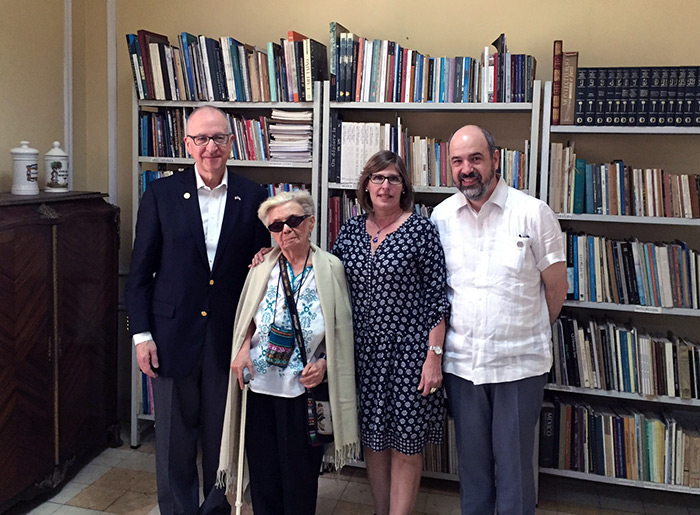Smithsonian Secretary David Skorton and our Center director Michael Mason are currently in Cuba to meet with representatives from the National Council of Cultural Heritage. Together with council chairman Gladys Collazo, they have released the following joint statement:
The people of Cuba and the United States and their institutions share a strong commitment to expand the boundaries of knowledge and appreciation of our history, art, and culture.
The Smithsonian Institution was established in 1846 by the United States for the “increase and diffusion of knowledge,” and today it is the world’s largest museum and research complex, consisting of 19 museums and galleries, a National Zoo, and nine research facilities. The National Council of Cultural Heritage was established in 1995 for the purpose of protecting, preserving, inventorying, restoring and researching Cuban cultural heritage, as well as promoting it nationally and internationally.
Cuba has a long-term commitment to cultural production and scientific and academic research as well as a rich tradition of scientific and artistic achievements. The Smithsonian and the National Council of Cultural Heritage aim to reach common goals of environmental and cultural sustainability, mutual respect, and cultural exchange together.
For many decades, Cuban cultural institutions and the Smithsonian have collaborated on diverse scientific and artistic projects. In 1989, the Smithsonian Folklife Festival hosted Cuban participants on the National Mall in Washington, D.C. Cuban artists have been represented in exhibitions at the Smithsonian American Art Museum and the Smithsonian’s National Portrait Gallery. Scholars from the Smithsonian’s National Museum of the American Indian work with their Cuban colleagues to research, document and sustain indigenous culture.
We are also working together to sustain cultural heritage and present Cuban culture at the 2017 Smithsonian Folklife Festival.
We hope to sign formal agreements soon, in order to support these present and future projects, as well as to further collaboration, advance cultural and natural research, and promote outstanding and productive working relations between the National Council of Cultural Heritage and the Smithsonian.


